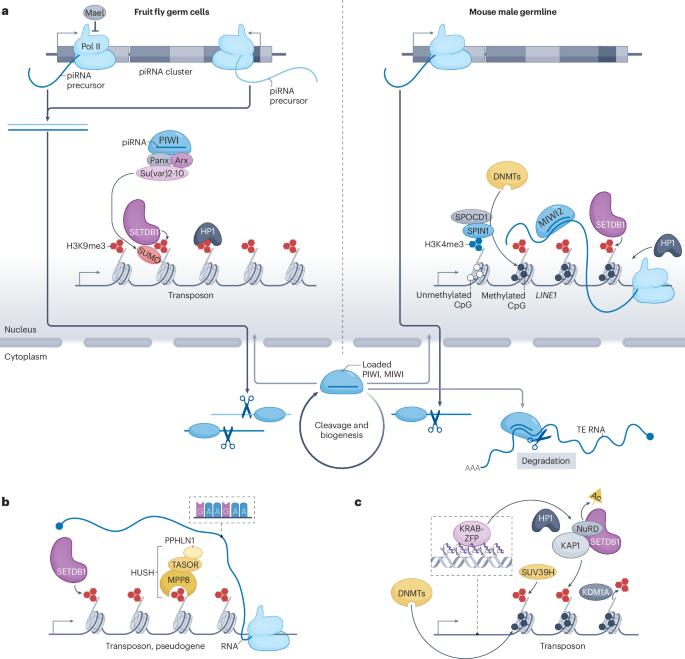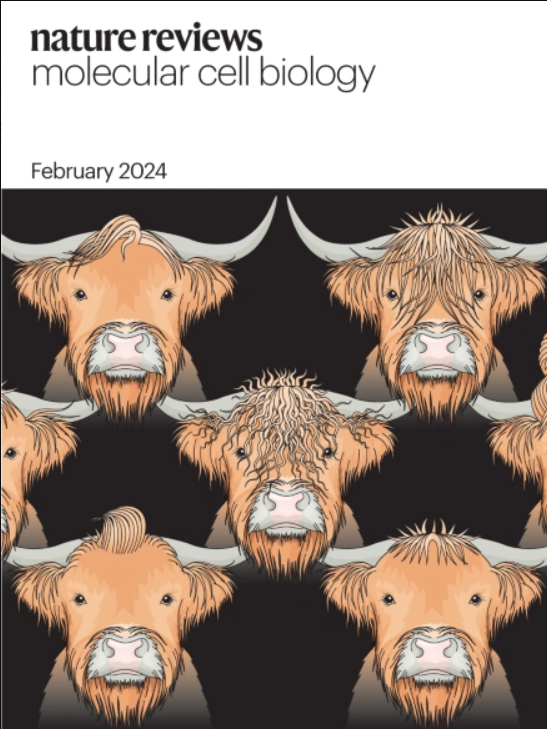Transcriptional and post-transcriptional regulation of transposable elements and their roles in development and disease
IF 90.2
1区 生物学
Q1 CELL BIOLOGY
引用次数: 0
Abstract
Nearly half of the genome of humans and other mammals consists of transposable elements (TEs). Recent advancements in sequencing technologies have revealed that TEs have important regulatory functions, echoing Barbara McClintock’s 1950s vision of TEs as ‘controlling elements’. Nevertheless, TEs can still interfere with gene expression and are linked to various human diseases. In this Review, we first discuss the multilayered transcriptional and post-transcriptional defence mechanisms that repress TE activity, and examine how they regulate endogenous gene expression. We then discuss recent studies showing that TEs can escape these repression mechanisms and unexpectedly become a vital part of animal development. Finally, we explore findings on TE derepression in cancer and neurological diseases, and emerging therapeutic strategies that exploit TE derepression, such as immunotherapies that target TE-derived tumour-specific antigens. Transposable elements (TEs) comprise nearly half of the human genome. This Review discusses transcriptional and post-transcriptional mechanisms that repress TE activity, how TEs escape this suppression and regulate endogenous genes in development and disease, and emerging therapeutic strategies that exploit TE derepression.


转座因子的转录和转录后调控及其在发育和疾病中的作用
人类和其他哺乳动物近一半的基因组由转座因子(te)组成。测序技术的最新进展表明,te具有重要的调控功能,这与芭芭拉·麦克林托克(Barbara McClintock)在20世纪50年代将te视为“控制元件”的观点相呼应。尽管如此,TEs仍然可以干扰基因表达,并与各种人类疾病有关。在这篇综述中,我们首先讨论了抑制TE活性的多层转录和转录后防御机制,并研究了它们如何调节内源性基因表达。然后,我们讨论了最近的研究表明,TEs可以逃避这些抑制机制,并意外地成为动物发育的重要组成部分。最后,我们探讨了癌症和神经系统疾病中TE抑制的发现,以及利用TE抑制的新兴治疗策略,例如针对TE来源的肿瘤特异性抗原的免疫疗法。
本文章由计算机程序翻译,如有差异,请以英文原文为准。
求助全文
约1分钟内获得全文
求助全文
来源期刊
CiteScore
173.60
自引率
0.50%
发文量
118
审稿时长
6-12 weeks
期刊介绍:
Nature Reviews Molecular Cell Biology is a prestigious journal that aims to be the primary source of reviews and commentaries for the scientific communities it serves. The journal strives to publish articles that are authoritative, accessible, and enriched with easily understandable figures, tables, and other display items. The goal is to provide an unparalleled service to authors, referees, and readers, and the journal works diligently to maximize the usefulness and impact of each article. Nature Reviews Molecular Cell Biology publishes a variety of article types, including Reviews, Perspectives, Comments, and Research Highlights, all of which are relevant to molecular and cell biologists. The journal's broad scope ensures that the articles it publishes reach the widest possible audience.

 求助内容:
求助内容: 应助结果提醒方式:
应助结果提醒方式:


